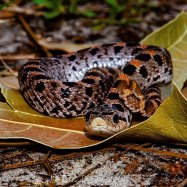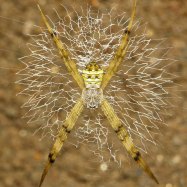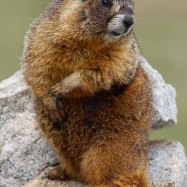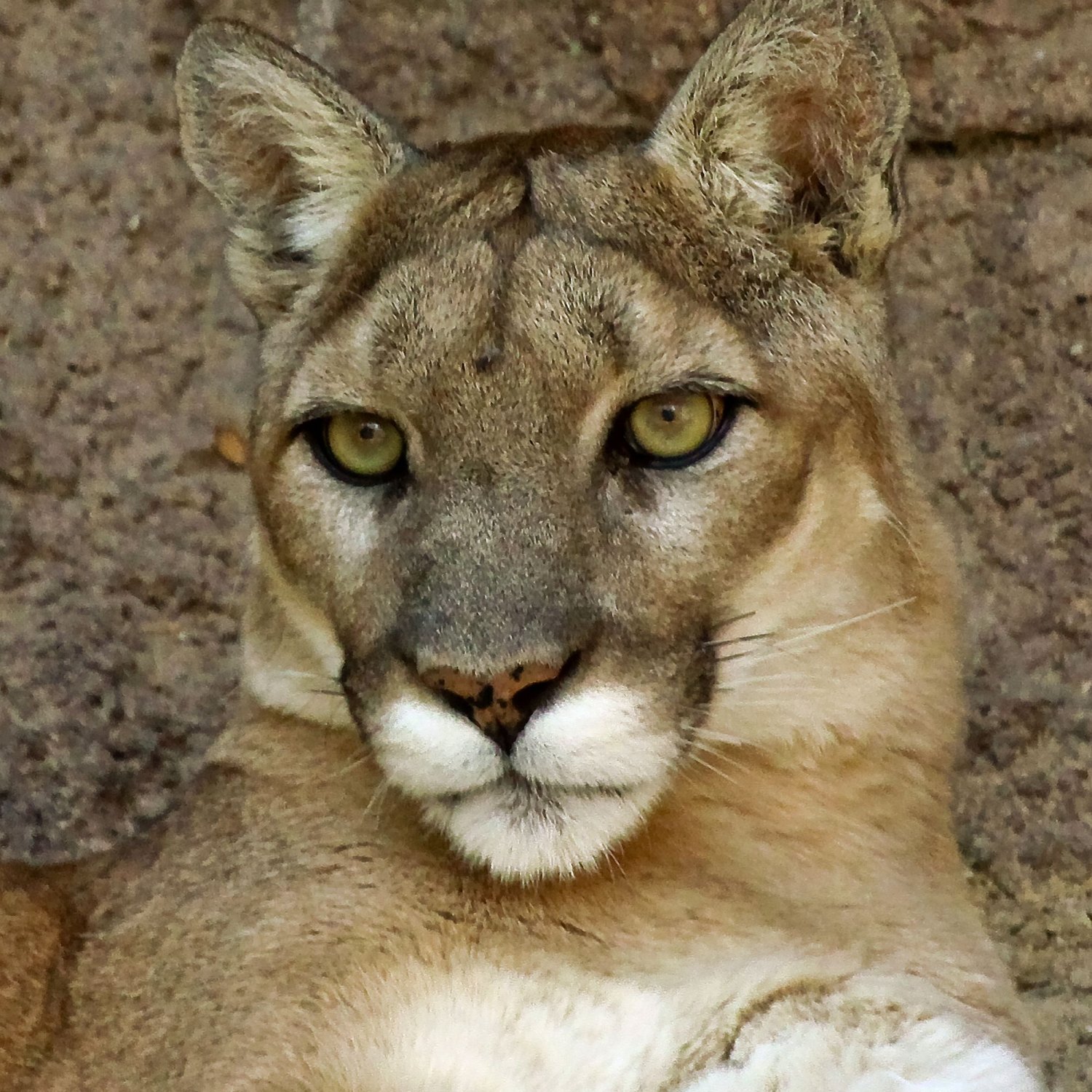
Mountain Lion
6 to 8 feet
The mountain lion, also known as puma or cougar, is a fascinating feline found in North and South America. They can grow up to 8 feet in length and have a sleek, muscular body. Belonging to the Felidae family, these majestic creatures are skilled hunters and adapt to various environments. #Wildlife #Felidae #Puma #Cougar
Animal Details Summary:
Common Name: Mountain Lion
Kingdom: Animalia
Habitat: Mountains, forests, deserts
The Elusive Mountain Lion: The Master of the Americas
The mountains are known for their ruggedness, their majestic beauty, and their ability to captivate our hearts. However, there is one inhabitant of the mountains that is often overlooked, yet is the true master of this land – the mountain lion.Scientifically known as Puma concolor, the mountain lion is a powerful and elusive predator found in the mountains, forests, and deserts of North and South America. With its tan or light brown coloration, slender and muscular body shape, and sharp claws and teeth, this animal is truly a sight to behold Mountain Lion.
But what makes the mountain lion such a fascinating and iconic creature? Let's delve deeper into its characteristics, habits, and habitat to discover just what makes this animal a true king of the mountains.
A Member of the Felidae Family
The mountain lion may also be referred to as a puma, cougar, or panther, but it is a member of the Felidae family, which includes other big cats such as lions, tigers, and leopards. However, unlike these other big cats, the mountain lion is the fourth largest cat, after the tiger, lion, and the jaguar.But don't let its size fool you – the mountain lion is a formidable predator, with the ability to take down prey twice its size. Its muscular and slender body allows it to be swift and agile, making it a stealthy hunter.
Habitat and Distribution
The mountain lion is a true master of its environment, as it can thrive in a variety of landscapes – from the rocky mountains to the dense forests and even the deserts. This adaptability is also reflected in its geographical distribution, as the mountain lion can be found in North and South America, from Canada to the southern tip of Chile.In the United States, this animal can be found in 16 states, with the highest concentration being in California, Colorado, and Idaho. Though the mountain lion is not considered endangered, it is still a rare sight to behold due to its elusive nature Monocled Cobra.
A Carnivorous Diet
As a member of the Felidae family, it comes as no surprise that the mountain lion is a carnivore. Its sharp claws and teeth are designed for hunting and taking down its prey, which can include deer, elk, and even bighorn sheep. However, the dietary habits of this animal may vary depending on its location, with some mountain lions known to eat smaller prey such as rabbits and mice.What's interesting about the mountain lion's feeding method is that it is one of the few predators that can take down and kill its prey with one powerful bite to the neck. This technique not only ensures a quick and efficient kill, but it also minimizes the risk of injury to the mountain lion.
The Master of Camouflage
One of the most striking features of the mountain lion is its beautiful tan or light brown coloration. And while it may seem like a pretty color, it serves a vital purpose in the life of this animal. Being a stealthy hunter, the mountain lion relies on its camouflage to blend in with its surroundings. This coloration, along with its slender body shape, allows it to move undetected in the mountains, making it a master of the hunt.But the coloration of the mountain lion is not only important for hunting; it also serves as a means of communication. Young mountain lions have a distinctive blackish coloring on their tails, which helps them follow their mothers in the wild. In contrast, a mountain lion's tail is also used to communicate with other mountain lions, as they use it to signal danger or aggression.
Size and Weight
When it comes to size, the mountain lion is no average house cat. On average, this animal can grow anywhere from 6 to 8 feet long, making it one of the longest cats in the world. And while its length may seem impressive, it is its weight that truly sets it apart – the mountain lion can weigh anywhere from 90 to 180 pounds, with males being larger and heavier than females.Despite their large size, mountain lions are known for their remarkable athleticism, as they can jump up to 18 feet and run at speeds of up to 50 miles per hour. Such agility and strength are essential for the survival of this animal, as they must navigate the rough and rugged terrain of the mountains.
A Closer Look Into the Family of Mountain Lions
While most animals live a solitary life, mountain lions are actually quite social creatures. They live in family groups called "prides," which typically consist of one male, several females, and their cubs. Though mountain lions are usually solitary hunters, living in prides allows them to communicate, hunt, and mate with other members of their species.What's even more fascinating is the relationship between a mountain lion mother and her cubs. The mother takes on the role of protector and teacher, raising her cubs and teaching them crucial skills such as hunting and survival in the wild. However, these cubs must eventually leave the pride to establish their own territory and start a family of their own.
Threats to the Mountain Lion
Despite being a powerful and resilient animal, the mountain lion still faces threats in its natural habitat. One of the main threats is habitat loss due to human development and urbanization. As mountain lions require large territories for hunting and breeding, this loss of habitat can greatly impact their survival.Furthermore, human-wildlife conflict is also a significant threat. Mountain lions may come into conflict with humans when their natural prey is scarce, leading them to turn to domestic animals for food. This has often resulted in conflicts and even fatal attacks.
Ambassador of the Mountains
The mountain lion is truly a remarkable and iconic animal, and it is our responsibility to protect and preserve this magnificent creature. From their adaptability and athleticism to their social structure and communication methods, the mountain lion has much to teach us about the delicate balance of nature.As we continue to explore and appreciate the beauty of our natural world, let us not forget the mountain lion – the master of the Americas and the ambassador of the mountains.

Mountain Lion
Animal Details Mountain Lion - Scientific Name: Puma concolor
- Category: Animals M
- Scientific Name: Puma concolor
- Common Name: Mountain Lion
- Kingdom: Animalia
- Phylum: Chordata
- Class: Mammalia
- Order: Carnivora
- Family: Felidae
- Habitat: Mountains, forests, deserts
- Feeding Method: Carnivorous
- Geographical Distribution: North and South America
- Country of Origin: United States
- Location: North and South America
- Animal Coloration: Tan or light brown
- Body Shape: Slender and muscular
- Length: 6 to 8 feet
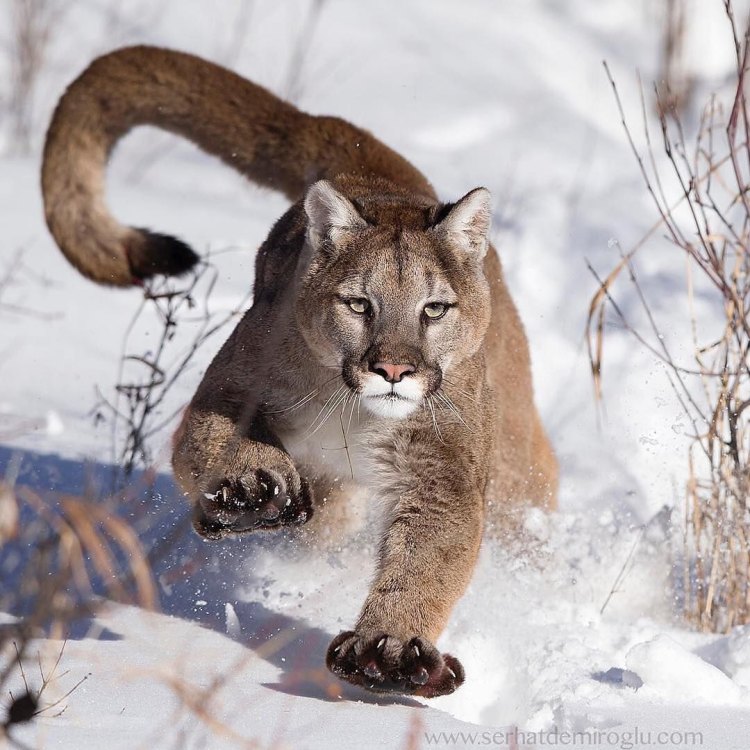
Mountain Lion
- Adult Size: Large
- Average Lifespan: 8 to 13 years
- Reproduction: Sexual
- Reproductive Behavior: Polygamous
- Sound or Call: Purr, growl, hiss, scream
- Migration Pattern: No regular migration pattern
- Social Groups: Solitary
- Behavior: Nocturnal
- Threats: Habitat loss, hunting
- Conservation Status: Least Concern
- Impact on Ecosystem: Top predator
- Human Use: Hunting, tourism
- Distinctive Features: Long, thick tail
- Interesting Facts: Also known as cougar or puma
- Predator: No natural predators
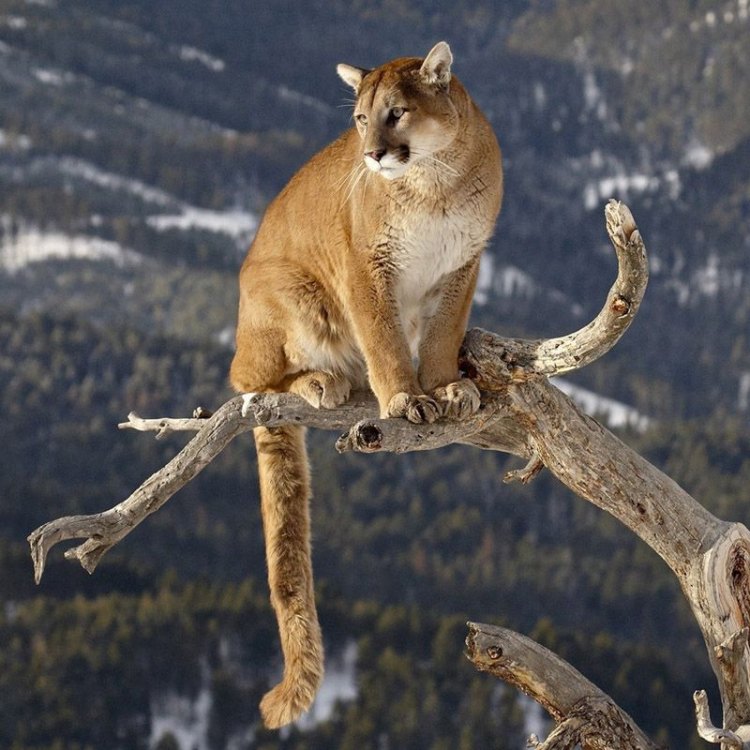
Puma concolor
The Fascinating World of Mountain Lions: Unique Features and their Impact on the Ecosystem
The mountains echo with the eerie sound of a growl, piercing the quiet of the night. It's the unmistakable call of the mountain lion, also known as cougar or puma. One of the largest and most elusive cats in the Americas, the mountain lion is a fascinating species with unique features that make it an apex predator and a vital component of the ecosystem.Mountain lions, scientifically known as Puma concolor, are native to the Americas, with a range that extends from Canada to South America PeaceOfAnimals.Com. These majestic creatures are found in a variety of habitats, ranging from mountains, forests, and deserts to coastal areas and grasslands. They are highly adaptable and can be found in almost every type of terrain, from sea level to an elevation of 13,000 feet.
Adult mountain lions are large and powerful animals, with males reaching lengths of up to 8 feet and weighing between 130 to 220 pounds. Females are smaller, measuring around 7 feet and weighing between 65 to 140 pounds. Their size and strength make them one of the largest predators in their natural habitat.
The average lifespan of a mountain lion is 8 to 13 years, with some living up to 18 years in captivity. However, in the wild, their lifespan is shorter due to threats such as habitat loss and hunting. Mountain lions have a sexual mode of reproduction, meaning they require both a male and female to mate and produce offspring. Their reproductive behavior is polygamous, with males mating with multiple females during the breeding season Mojave Rattlesnake.
One of the most distinctive features of the mountain lion is its ability to purr, growl, hiss, and scream. These vocalizations play a significant role in communication among the species, especially during mating and territorial disputes. Mountain lions are solitary animals, only coming together to mate or raise their young. They have no regular migration pattern and usually establish their territories in rugged and inaccessible areas.
Being solitary and elusive creatures, mountain lions are most active during the night, making them nocturnal animals. They have excellent eyesight and a highly developed sense of smell, allowing them to navigate their surroundings and hunt their prey efficiently. Mountain lions are opportunistic hunters, feeding on a variety of prey, including deer, elk, bighorn sheep, and small mammals like rodents and rabbits.
But despite being a top predator, mountain lions are not immune to threats. Habitat loss due to human development, agriculture, and logging is a significant cause of concern for this species. As their natural habitat shrinks, mountain lions are forced to venture into human settlements, resulting in human-wildlife conflicts. Additionally, hunting and trapping also pose a significant threat to their survival.
Due to these threats, the mountain lion is classified as a species of Least Concern by the International Union for the Conservation of Nature (IUCN). However, their conservation status may vary in different regions, with some areas reporting a decline in their population while others deem them to be stable.
The impact of mountain lions on the ecosystem cannot be overstated. As apex predators, they play a crucial role in maintaining a balanced ecosystem. By regulating the populations of their prey species, mountain lions help prevent overgrazing and maintain the health and diversity of plant life. They also contribute to the genetic diversity of their prey species, which is essential for the survival of the entire ecosystem.
Moreover, mountain lions also act as indicators of the health of their environment. An abundance of mountain lions in an area reflects a healthy ecosystem, whereas their decline can indicate underlying problems that need to be addressed. Therefore, the conservation of mountain lions is vital to maintaining the balance of nature.
The unique features of mountain lions have also made them a subject of fascination and human use. Many people are drawn to these creatures, leading to an increase in wildlife tourism focused on observing or tracking mountain lions in their natural habitat. However, this must be done responsibly to avoid disturbing or endangering the animals.
Sadly, mountain lions are also hunted for sport and trophies, despite regulations in place to protect them. In some regions, hunting is allowed to control the population of mountain lions, which can result in imbalances in the ecosystem and disrupt their social behavior.
Apart from their distinctive features and their significant impact on the ecosystem, mountain lions are also surrounded by interesting facts and myths. The term "mountain lion" is often used interchangeably with "cougar" or "puma." This is because these animals have no natural predator, not even humans, and have been known to take down prey twice their size.
Another interesting fact about mountain lions is their long, thick tail, which measures around one-third of their total body length. This tail helps them maintain balance while jumping and running, making them powerful and agile hunters.
In conclusion, mountain lions are truly remarkable creatures with unique features and an essential role in the ecosystem. However, their populations are threatened by human activities, highlighting the need for conservation efforts. As we continue to learn more about these elusive cats, it is crucial to balance our admiration and fascination with responsible conservation practices to ensure their survival for generations to come.

The Elusive Mountain Lion: The Master of the Americas
Disclaimer: The content provided is for informational purposes only. We cannot guarantee the accuracy of the information on this page 100%. All information provided here may change without prior notice.

